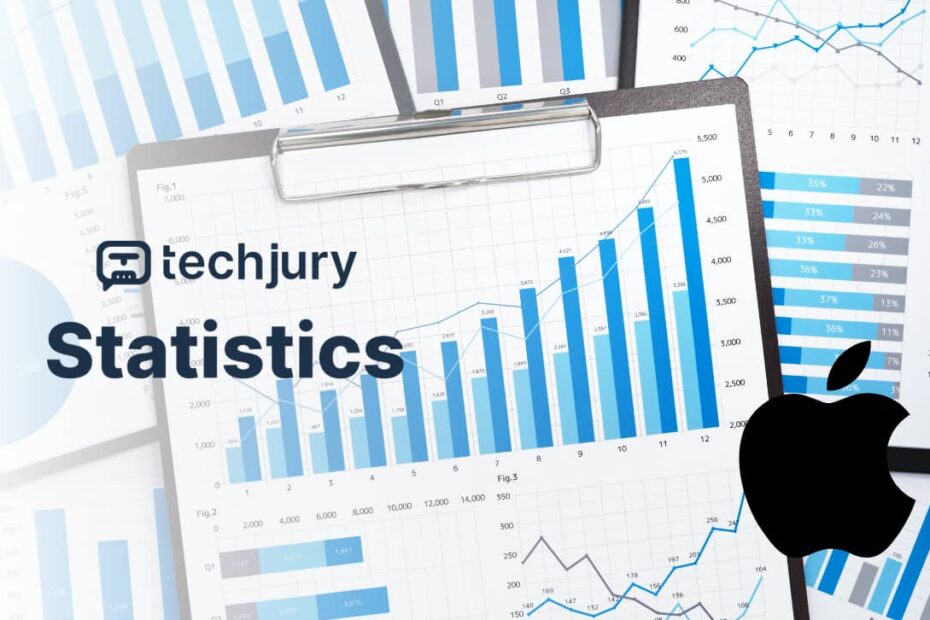Introduction: The Technological Revolution Personified
When you think about technological innovation, one name consistently emerges as a beacon of transformative potential: Apple. More than just a technology company, Apple represents a profound narrative of human creativity, strategic vision, and relentless pursuit of excellence. This comprehensive analysis will journey through Apple‘s remarkable trajectory, offering unprecedented insights into its technological evolution, market dynamics, and strategic brilliance.
The Genesis of a Technological Titan
Apple‘s story begins not in gleaming corporate headquarters, but in a humble garage in Los Altos, California. Founded on April 1, 1976, by Steve Jobs, Steve Wozniak, and Ronald Wayne, the company emerged during a pivotal moment in technological history. What started as a small entrepreneurial venture would ultimately reshape global technology landscapes.
Technological Evolution: From Garage Startup to Global Innovator
The Early Years: Pioneering Personal Computing
In the late 1970s and early 1980s, personal computing was an emerging frontier. Apple‘s first products, like the Apple I and Apple II, were revolutionary. These machines weren‘t just technological products; they were gateways to a new digital universe. The Apple II, launched in 1977, became particularly significant, selling over six million units and establishing Apple as a serious technological contender.
Macintosh: Redefining User Experience
The Macintosh, introduced in 1984, represented a quantum leap in technological design. With its graphical user interface and mouse-driven interaction, it fundamentally transformed how humans engaged with computers. This wasn‘t merely a product launch; it was a paradigm shift in human-computer interaction.
Financial Performance: A Numerical Narrative of Success
Revenue Trajectory: An Exponential Growth Story
Apple‘s financial performance reads like a masterclass in strategic growth. From modest beginnings, the company has transformed into a global economic powerhouse. In 2022, Apple generated \$394.3 billion in revenue, representing a staggering 7.8% increase from 2021. To contextualize this growth, Apple‘s annual revenue has expanded by over 4,700% since 2004.
Product Line Performance
Different product lines have contributed uniquely to Apple‘s financial success:
iPhone: The Revenue Powerhouse
The iPhone remains Apple‘s most significant revenue generator. In the fourth quarter of 2022, iPhone sales accounted for an impressive 47.3% of the company‘s total revenue. This single product line has not just generated revenue but has fundamentally reshaped global communication technologies.
Wearables and Accessories
Apple‘s Wearables, Home, and Accessories segment has emerged as a critical revenue stream. Holding approximately 36.5% of the wearables market, this division includes popular products like Apple Watch, AirPods, and HomePod, demonstrating the company‘s ability to diversify beyond traditional computing devices.
Global Market Dynamics: A Worldwide Technological Influence
Geographic Revenue Distribution
Apple‘s global reach is truly remarkable. Approximately 45% of its revenues originate from the Americas, with 40% specifically from the United States. However, the company‘s global footprint extends far beyond North America:
- China: Over \$40 billion in revenue
- Japan: Approximately \$21 billion
- Europe: Around \$68 billion
- Asia Pacific: Roughly \$19 billion
This geographic diversity underscores Apple‘s sophisticated global strategy and adaptability across different market ecosystems.
Technological Innovation: Beyond Product Development
Research and Development Investment
Apple‘s success isn‘t accidental; it‘s the result of sustained, strategic technological investment. The company consistently allocates significant resources to research and development, exploring emerging technologies like artificial intelligence, augmented reality, and advanced semiconductor design.
Ecosystem Integration
What distinguishes Apple is its holistic approach to technology. Rather than viewing products in isolation, Apple creates interconnected ecosystems where devices, software, and services seamlessly communicate. This integrated approach has been crucial in building customer loyalty and maintaining competitive advantage.
Consumer Demographics: Understanding the Apple User
Age and Gender Insights
Contrary to traditional luxury brand perceptions, Apple has successfully appealed to diverse demographic segments:
- 51% of iPhone users are female
- 16-24 year olds represent the largest iOS smartphone user group
- 35% of US iPhone users have also purchased an Apple Watch
These statistics reveal a nuanced consumer base that transcends traditional technological market segmentation.
Investment Perspectives: More Than Just a Technology Company
Stock Performance and Market Valuation
Apple‘s stock performance offers a fascinating study in sustained growth. The company became the first American corporation to achieve a \$1 trillion market capitalization, and its value has expanded by approximately 15,000% since 2001.
Strategic Recommendations for Investors
For potential investors, Apple represents more than a technology stock. It‘s a testament to sustained innovation, strategic adaptability, and visionary leadership. Key considerations include:
- Consistent revenue growth
- Diversified product ecosystem
- Strong global brand recognition
- Continuous technological innovation
Future Trajectory: The Next Technological Frontier
Emerging Focus Areas
Looking forward, Apple is likely to concentrate on:
- Advanced artificial intelligence integration
- Augmented and virtual reality technologies
- Sustainable technology development
- Enhanced privacy and security technologies
Conclusion: A Continuing Technological Narrative
Apple‘s journey transcends traditional corporate storytelling. It represents a profound exploration of human potential, technological imagination, and strategic brilliance. From a garage startup to a global technological leader, Apple continues to redefine what‘s possible.
As we stand on the cusp of new technological revolutions, one thing remains certain: Apple will continue to be at the forefront, transforming our understanding of technology, innovation, and human potential.
Key Insights
- Sustained innovation drives long-term success
- Ecosystem integration is crucial in technology
- Diversification beyond core products ensures resilience
- Strategic global expansion matters more than local dominance
- Continuous learning and adaptation are fundamental to technological leadership
